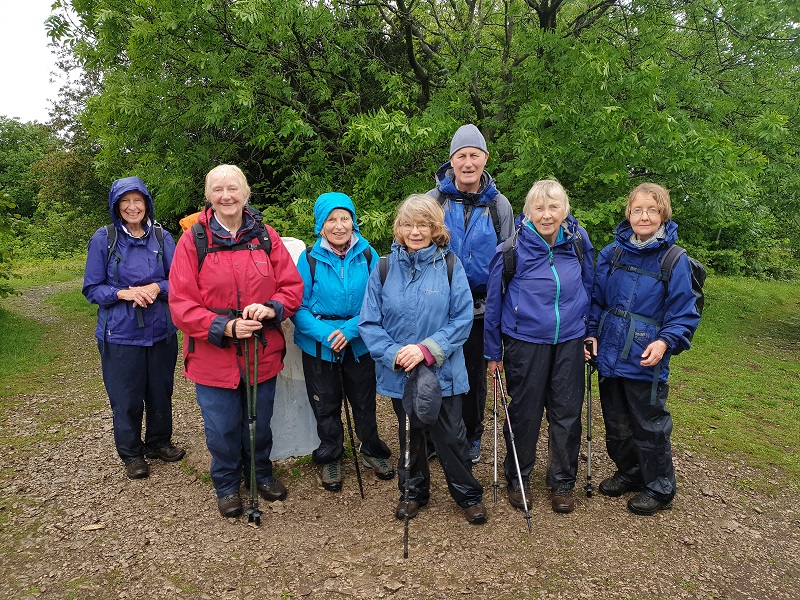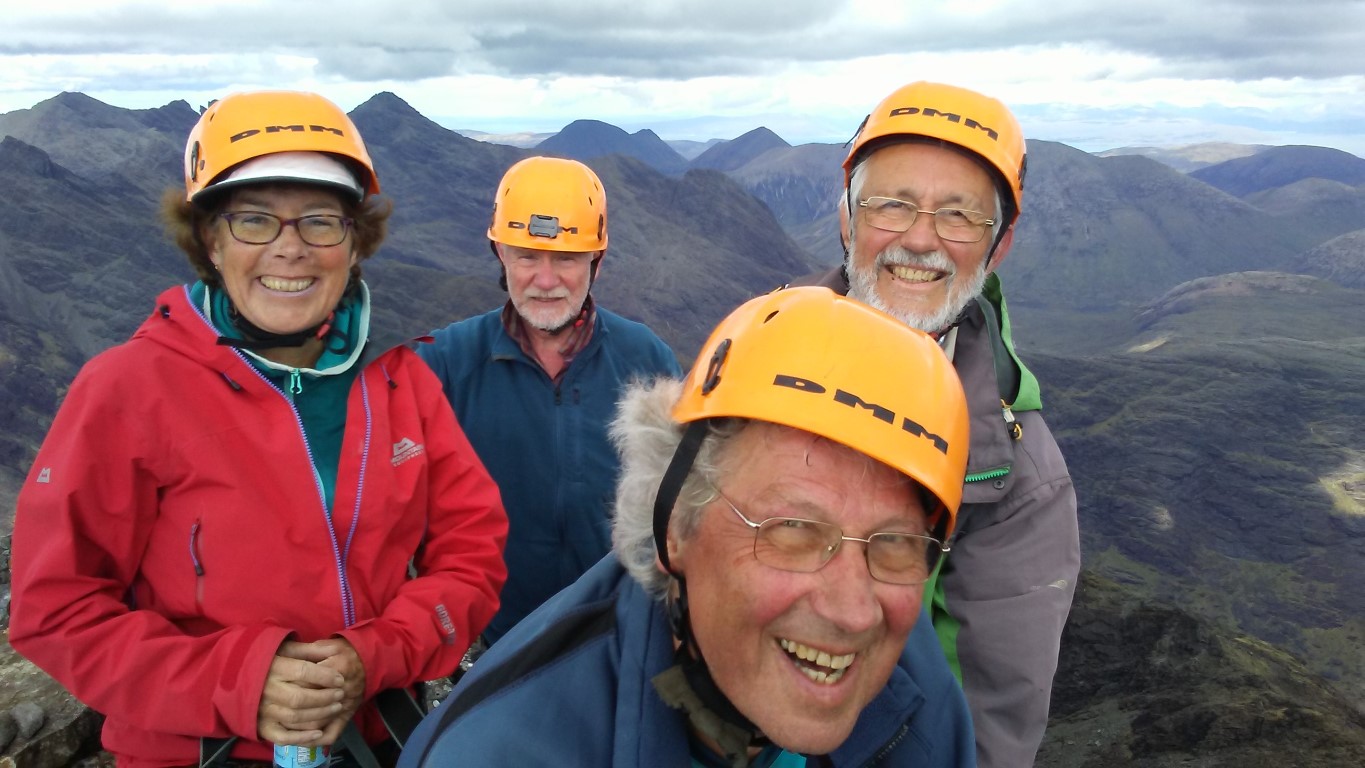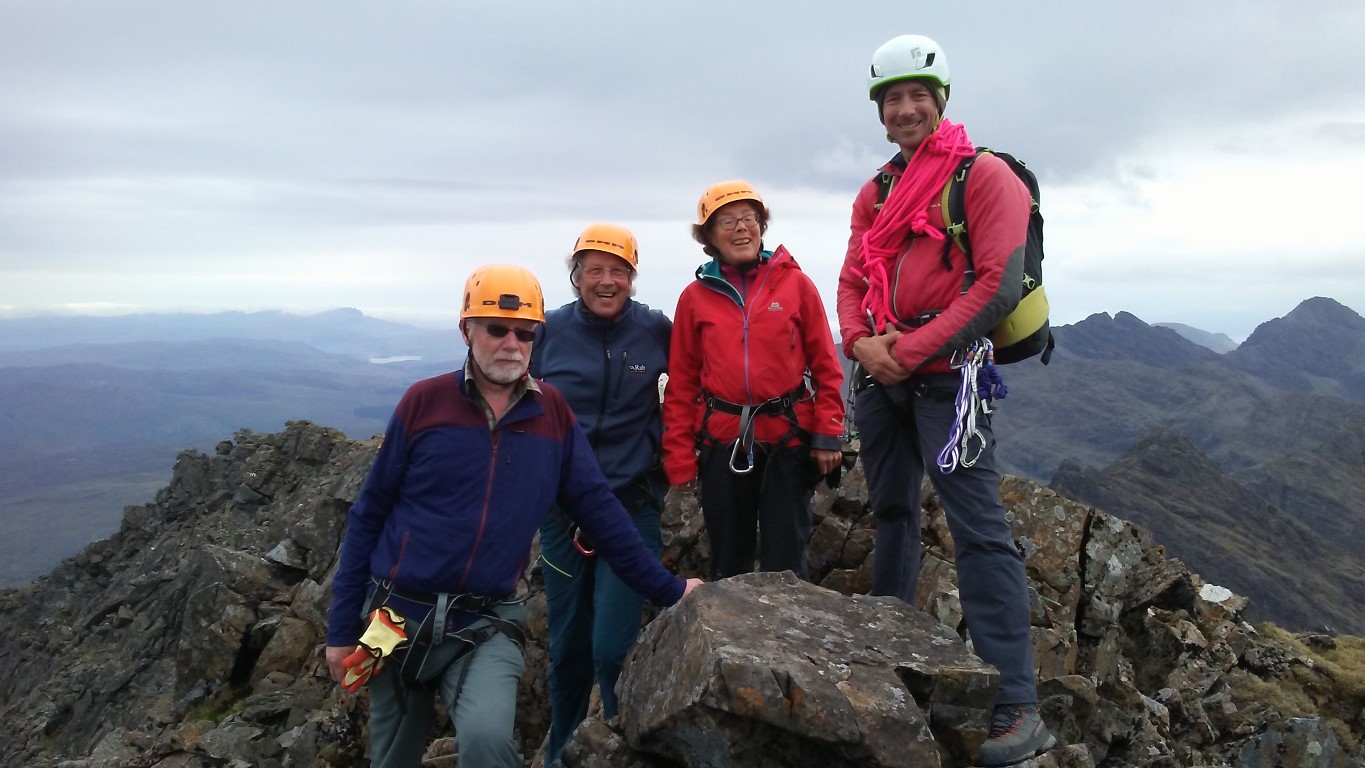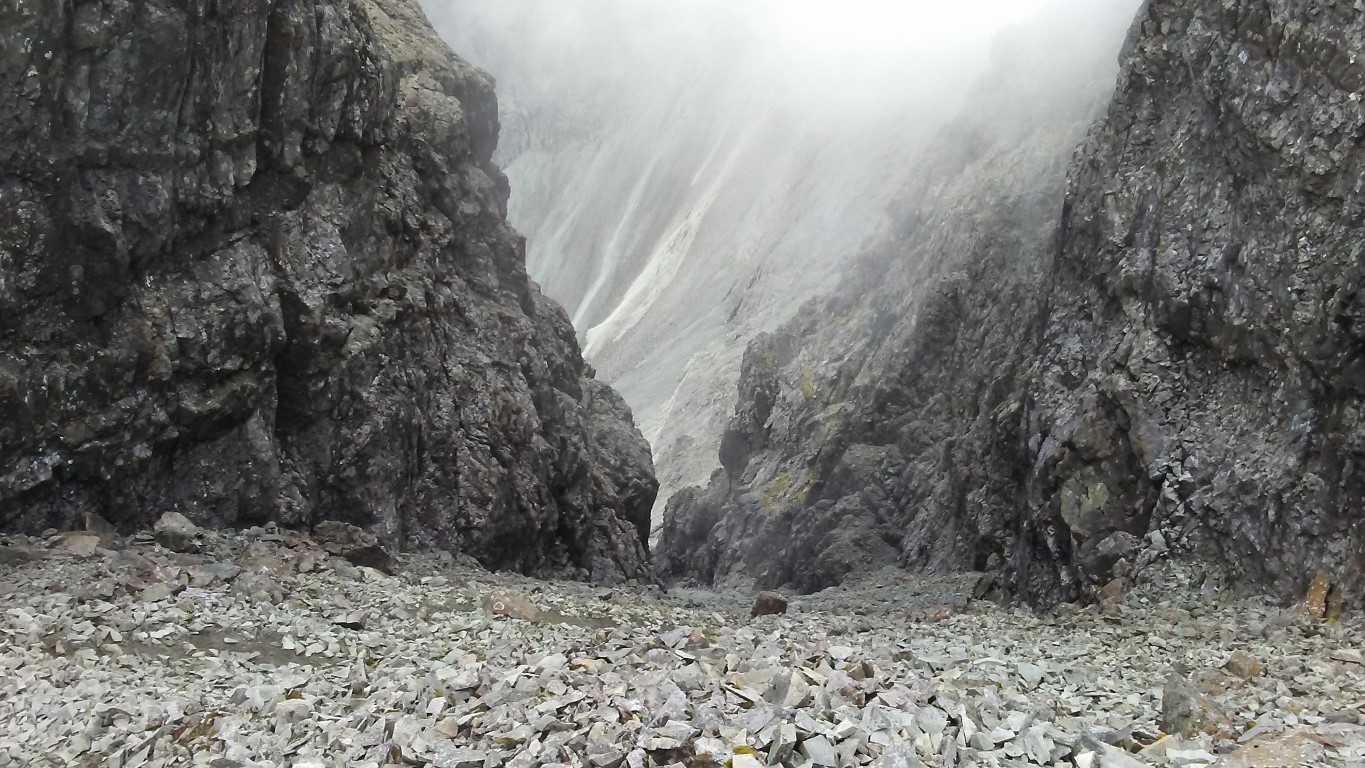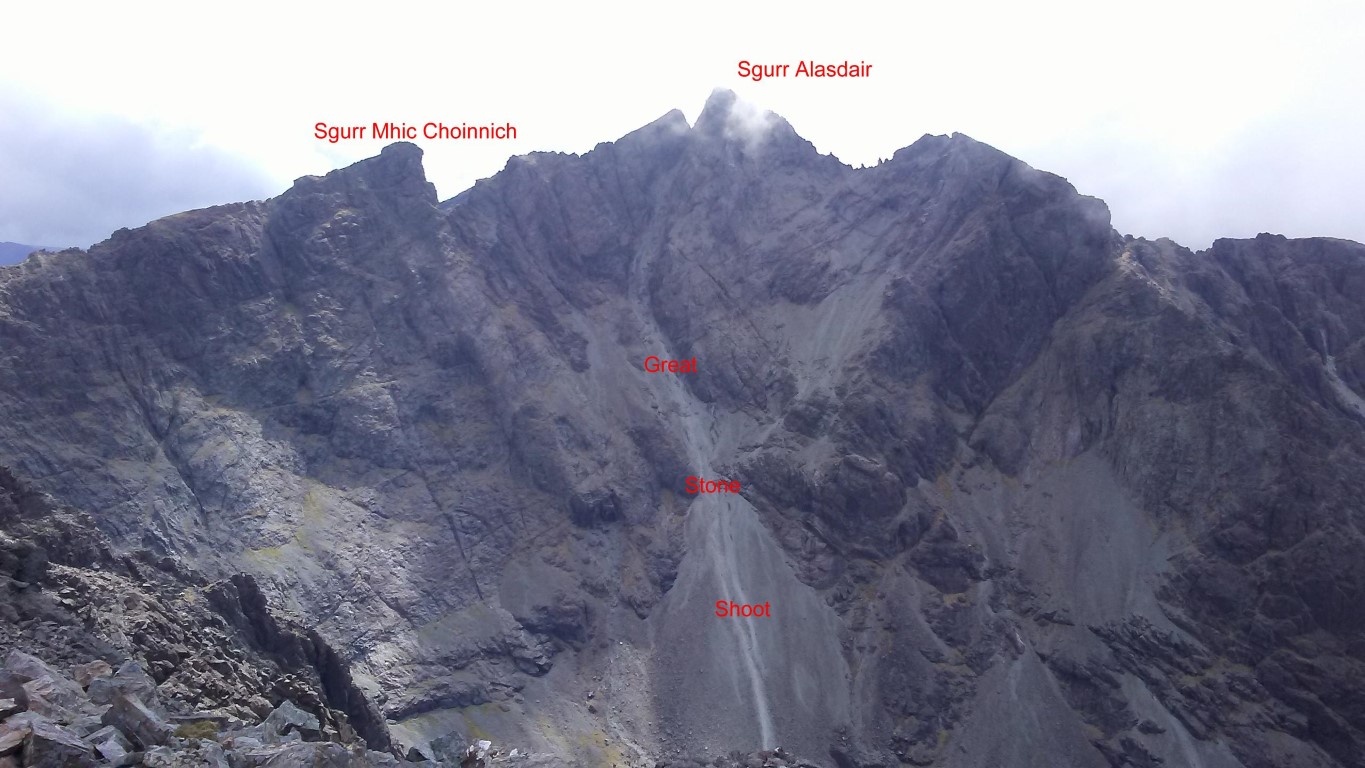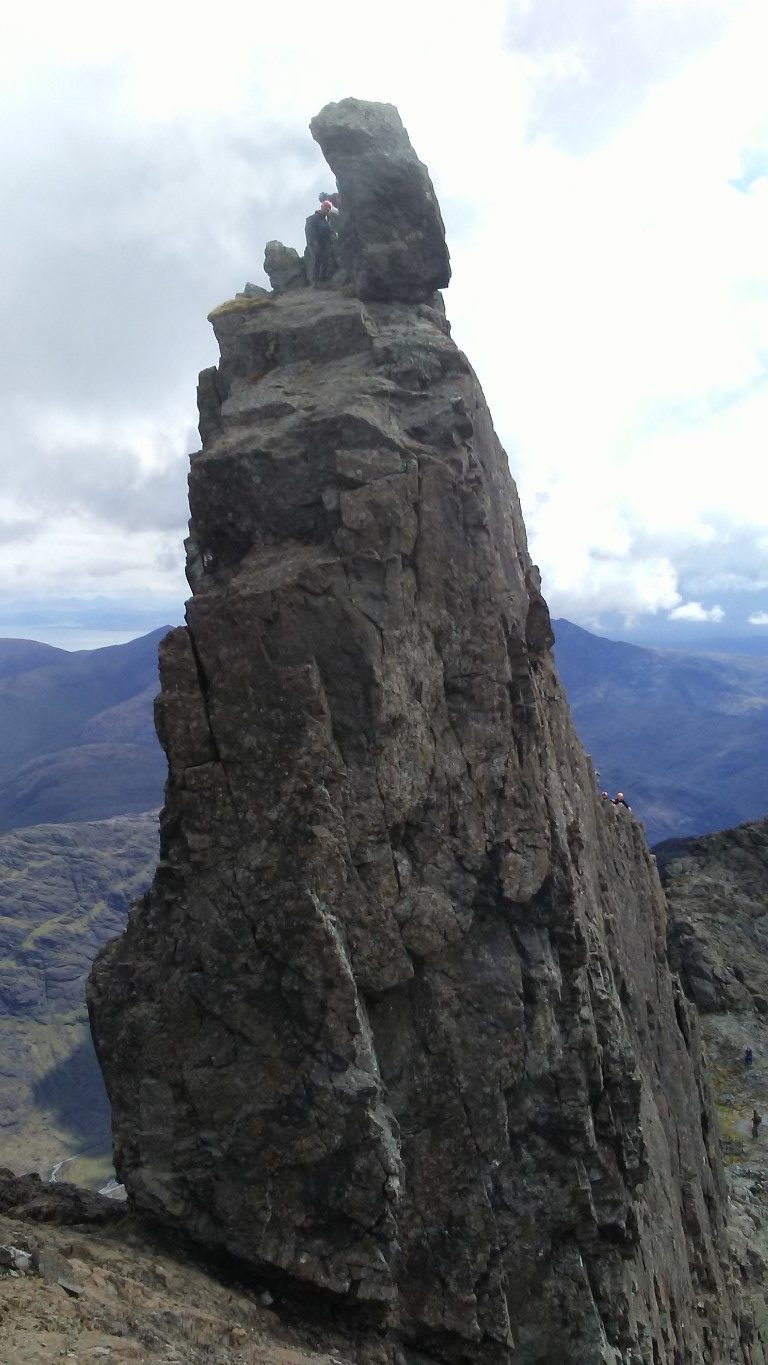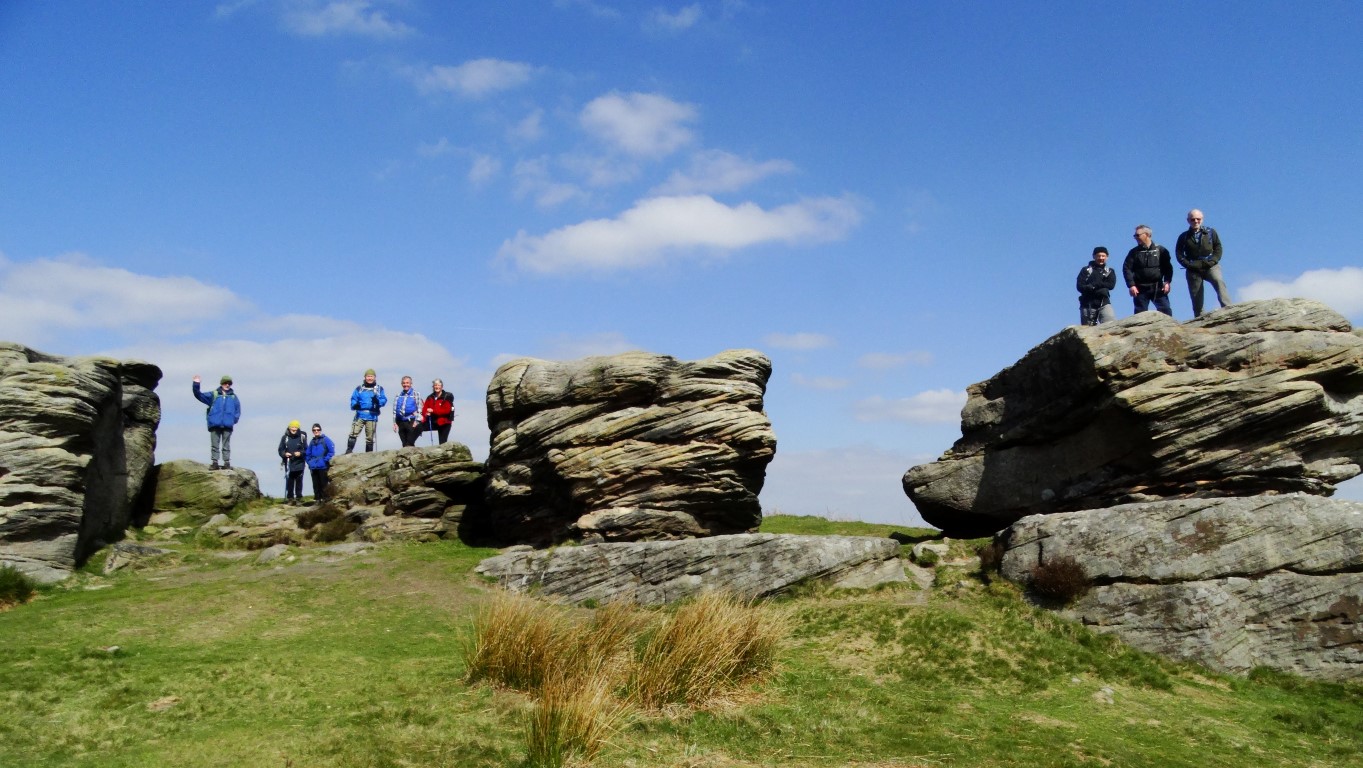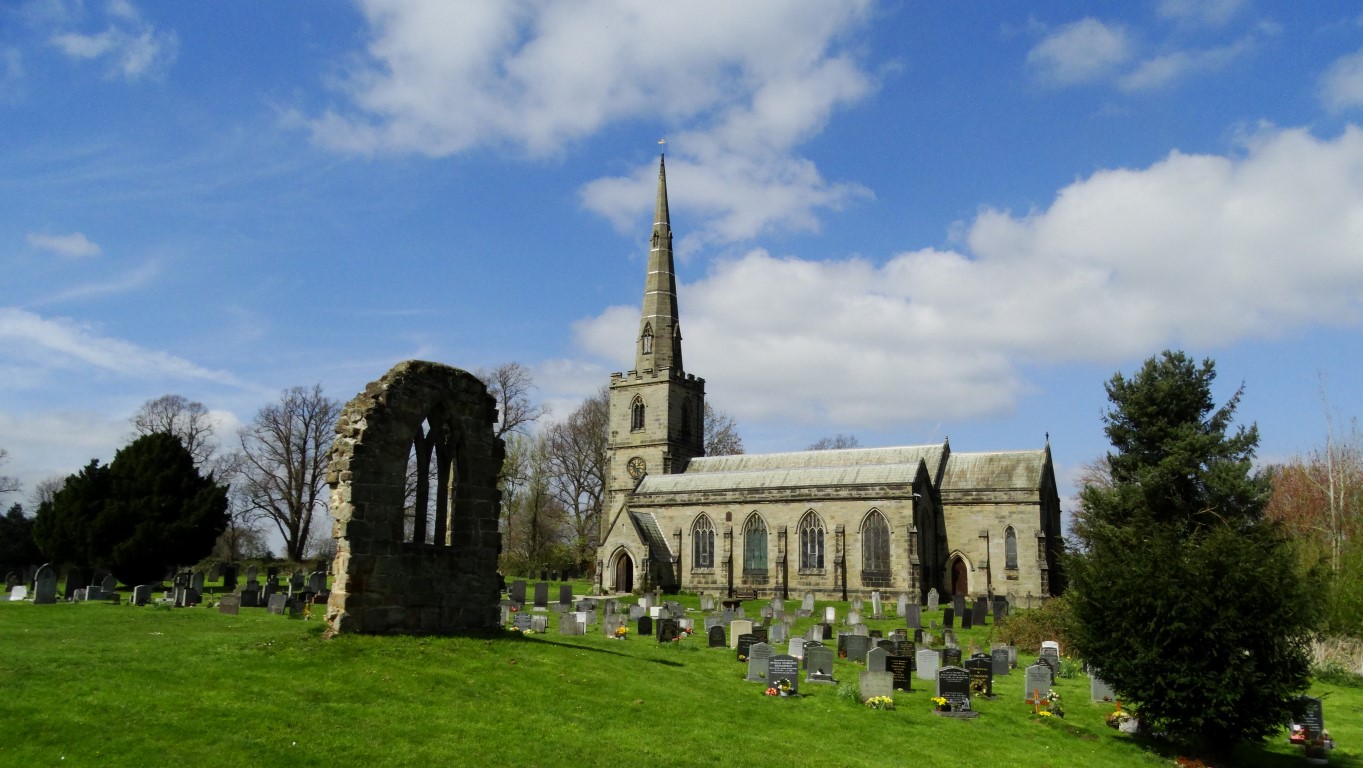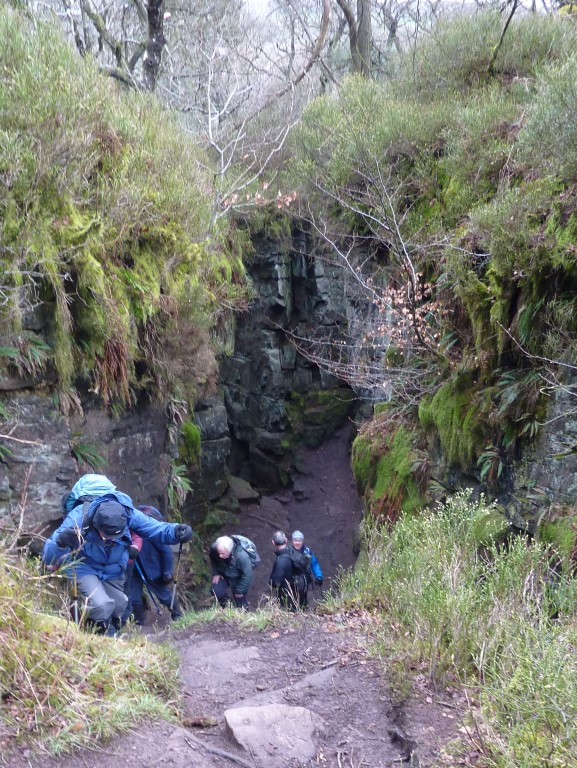East Cheshire Ramblers Group
Minutes of the Committee meeting held on 25th April 2019
1. Present
Jane Gay – Chair
Sue Munslow
– Membership Secretary
Kathryn Carty
Maggie Swindells
– Social and Events Secretary
Keith Anderson
Adrian Flinn –
Secretary
Neil Collie (for item 1 only)
Apologies: Colin Finlayson (Treasurer)
and
Dave Barraclough
(Footpath Committee Chairman)
1. RA General Council 2019
held in Manchester on 13/14th April . Feedback
was given by Neil Collie who attended this meeting on behalf of the Area since
the Congleton Group (whose turn was to represent the
3 groups in
1
our area) were unable to attend
(notes prepared by Neil are attached in Appendix 1). Key points relevant to ECR
group were:
a) Priority to address the
slow decline in membership. The Committee considered different ways that ECR
can reach out and attract new members in our area. After considering several
options (including publicity) it was agreed to explore links with other walkers
(who may walk alone or in small groups) to explain the campaigning work of the Ramblers
Association (RA) at a national level and the local work of ECR members
inspecting and maintaining the local network of footpaths. This may encourage
other walkers to join and support the RA. Action: All Committee members will
attempt to make links with other walkers in our area and report back at the
next meeting.
b) the
work of our Footpath Committee will be explained in an article to be posted in
our website for information to the wider membership/audience one of our key
activity that benefits everyone walking in our patch
2
whether an RA member or not. Action:
Neil Collie
The Committee thanked Neil .
2. Matters arising from last
meeting
2.1 Walk Leaders Training: arranged to take
place on 4 July (full with a
waiting list).
2.2 Rainow
FP28 (Harrop Brook bridge):
ECR contribution was actioned and we are now awaiting notification from Cheshire
East Council (Evan Pedley) as to when the
installation will commence so that we can take photos for our own publicity
(see also 1 (a) above)
2.3 Lost Ways: No progress to report. Action:
Colin Finlayson to report at next meeting on current situation and progress.
2.4 RA membership fees: the proposed motion to RA
General Council 2019 regarding the freezing of subscriptions which could
potentially help to entice more walkers joining the RA was circulated for
discussion with the other Cheshire East groups (see also 1(a) above). It gained
some support but not
3
unanimous so it was not submitted to
Central Office.
2.5 Frequently asked
questions for new Walk Leaders: the Q&A is ready be posted in the website asap. (Post meeting note –
the Q&A is available in the website now).
3. New Issues
3.1 Walk Register App: to be reviewed when version 2
of the App is released in the Autumn by RA.
3.2 Front cover to Ò6 monthÓ programme:
not an issue as most of the
information that was proposed to be incorporated on a front page can be found
in the website under the tab ÒAboutÓ.
4. Walks Programme
4.1 Routinely request a short
report from Walk Coordinators on any significant points: this proposal was rejected by
the Committee (put forward by Dave Barraclough) as it
was felt the this would be an unnecessary burden placed on the Coordinators
and, in any event, if a Coordinator needs to raise any issue can do so
4
by approaching a Committee
member as they do now.
5. Reports from Officers
5.
1 Chair
Report in
Appendix 2. Noted.
Several names of experienced
Walk Leaders were put forward as they may be willing to help with the training
course (see item 2.1 above).
The Social Secretary will be
given access to the website for posting information. The Chair and Secretary
have access already.
5.2 Treasurer
Report in Appendix 3. Noted
5.3 Membership
Report in Appendix 4. Noted.
The new member Welcome Letter
has been updated with the latest feedback from the Committee. This letter
contains useful information to access the available resources provided by ECR
and RA in their website. It was agreed to attach this letter to the minutes so
5
that existing members have access
to this very useful information as well (see Appendix 5)
5.4 Social & Events
Report in Appendix 6. Noted.
5.5 Footpaths
Report in Appendix 7. Noted.
5.6 Publicity
No report. The weekly walk
reports are going into the Macclesfield Express on a
regular basis.
6. Any other Business
6.1 Area Leadership Day
– Crewe – Friday 26th April: this meeting was organized by
the RA Northern Area Support Officer (Diane Simcoe) to give volunteers in the
ECR and the other two groups in our area involved in Committee and other lead
activities to meet area support staff and a Ramblers director and have an
opportunity to network and learn about new staff and developments at Central
Office. Unfortunately the Committee received notice of this meeting less than
24 hrs. of the date and no
6
one in the Committee could
attend as they had other commitments. Unfortunately, in addition, the notice
was not sent to all the relevant people in our Committee. Action: Jane Gay
will contact Diane Simcoe to ensure that she has all the relevant names/contact
details in our Committee and explain the lack of participants from ECR.
6.2 Countryside Access Forum:
John
Handley has resigned and we recognize his contribution and thank him for all
the work he has done on ECR behalf. Morris Palin is still a member of this
forum.
6.3 Safeguarding information : will be added as an item for the agenda of our next
meeting. Action: Adrian Flinn and Maggie Swindells
will provide background information before the next meeting
Date of next meeting
Monday 24th June 2019
at 1.30 pm at Chair house
Adrian Flinn – Secretary
(29.4.2019) 7
APPENDIX 1 Reflections
on General Council, Manchester 2019
A highly organised
and slick event. The staff, Trustees and the volunteers for the event were
all wearing the same T shirts emphasising
the One -Team-Approach. All the staff and Trustees sat along the front row of
the auditorium. Senior staff members were called upon in turn to give their
part of the presentation supported by the Trustee who had been involved with
that topic.
‘Van’ (Vanessa) Griffiths the
new Chief Executive appointed 2 years ago, emphasised
we are all One Team, no more divisions, but embracing change and moving forward
together. We were reminded that we didn’t belong to a walking club but to a
movement. The Ramblers organisation is aspiring to
become the ‘Go-To’ place for walking. Central office is listening and new
methods would be modified in light of feedback. Local successes need to be
shared with the Trustees and Central Office (CO).
First priority was to address
the slow decline in membership over the last 15 years and there was a promise
to achieve membership growth ‘within 3 years’. We needed to be a welcoming organisation reaching out to new members, and recognising that the majority of members do not go on organised walks.
The new IT Director spoke lucidly
about the ‘Digital and Data Transformation’ going on and spoke about her
priority to make it easier for everyone, The vision included new phone apps
that would enhance your walking experience. The ambition was to build a system
as good as Trip Adviser that would advise you about the local area –even
tell you which path to take to avoid a muddy section? 5 databases have been
combined into one and the new digital dashboard is there to be used. Walk
leaders would zapp members
cards at the start of walks so that CO could collect all sorts of lovely data
about what we were doing. This data is useful to justify support from funders.
In answer to a question, the director said that if ‘someone really didn’t want
to be zapped it would not be compulsory’. More on the General Data Protection
Regulations (GDPR) later…
The finances are in good
order. £3.9 million surplus this year. But legacies
contributed £1.6m and are notoriously unreliable. £250,000 is earmarked
annually for legal fees opposing footpath changes – is this sufficient?
I didn’t stay for the dinner,
apparently there was a quiz all about Manchester…. and guess which table won…… Greater Manchester & High Peak Area!
On the second day, there was
the election of three new Trustees. All the candidates were passionate about
walking….all embraced change and most were
experienced in change management and knew it was difficult……
8
Next was the consideration of
the motions that had been put forward. Only seven this year
including one to rename the Agenda Committee to be the Motions Review
Committee. Did it need to be debated?…….
Yes it did!
Next up was GDPR and a motion asking
the Trustees to acknowledge that locally held databases were OK. Apparently
not, and a Trustee threatened us with a one million euro (or was it ten million
euro?) fine. CO have it in hand with a dashboard app
where areas and groups will be able to access the information they need? No
doubt our membership secretary has all this in hand.
Third was a motion asking for
an increase in publicity for the work ‘we do in improving the quality of the
Public Rights of Way and in campaigning for increased access’ We were told that
two new posts have been created for two years: Local Advocacy Advisors, one in
the south and one in the north, who would help with this. Fourth motion was
asking for school packs to help recruit young people (and their parents) ‘who
then stay with us for all their lives’.
Fifth
motion was bemoaning the change of Policy by the Environment Agency (EA)
towards maintenance of river banks where they impinge on rights of way.
Apparently CO had been re-assured by the EA chief exec there was no change in
policy with respect to river banks ‘on their land’.
But most problems occurr not on EA land …….?
Sixth motion was on national planning
guidance on green spaces and rights of way. Laudable stuff to press for
strengthened guidance….
Seventh motion was an
entertaining speaker on a motion to create a diverse and representative General
Council (GC). She argued very persuasively that diverse organisations
make better decisions and asked that Areas examine how they select there representatives to GC. Were there actual
or perceived barriers that made participation by women more difficult? The
Trustees to report back to 2020 GC which is to be held in Avon.
I can’t remember which motions were carried or
defeated (except the first which, thankfully, was passed unanimously) but all
the details of the motions and much more is on the Ramblers website.
Overall impression? For me it
was exhausting (even without the evening dinner) but there is no doubt we are
on the move and led by an impressive team – none of whom seemed to have
been in post for more than one or possibly two years. Will the same team be
there in five years time when it will be possible to assess the effectiveness
of the changes which we are being asked to embrace? It
was inspiring, almost evangelical at times. It is more than about led walks……. we are all One Team working together, and don’t
forget the main message…. more members, more members, more members.
One final thought, are we
missing out on conversations and consultations with CO
as we have no area representatives? Are other areas better informed than we
are? Maybe, just maybe, it is time to consider having an Area Chair –
even if a ‘virtual’ one?
NSC 16.04.19
9
APPENDIX 2
Well,
itÕs been a busy time and IÕve done little walking!!
I have
met with Maggie a couple of times re the Social SecretaryÕs role and feel very
confident that she is going to do an excellent job.
I have
attended a meeting at MelanieÕs house about walk leading for the Ilkly weekend away. I have attended the meal at the Gurkha restaurant in Macclesfield.
I also attended the talk given by Duncan which was
brilliantly supported and was MaggieÕs first event.
Cheshire
East area volunteered to trial the national first aid training and we were
selected. Eventually the date of the 20th of March was agreed. There were 11
places available in the morning and the same number in the afternoon. I
advertised the course and had no problem filling our allotted 7 places.
Eventually we had seven people who attended in the morning and three in the
afternoon. We also have a waiting list of
2/3 people who would like to
attend the next course we run. The course was excellent and I think everybody
who went learnt something and came away feeling more confident about dealing
with a serious emergency. This, I think, could become part of our annual program.
John Kummer from North and Mid Cheshire wanted to
send 2 participants so maybe we could turn to them if we were short of
attendees.
I have
met with Gillian Kay and Sue Munslow to organise the walk leader training. Much communication has
gone on via email and we eventually have a program which
is going to run on the 4th of July. I have two volunteers prepared to help at
the moment. They are Michael Murphy and David Gylee.
Frank and I are also prepared to help but we do need at least two more people
so please rack your brainÔs and ask around amongst
experienced leaders. I advertised the course on the 29th of March at about 5 pm
and by the end of the evening I had 11 candidates with 6 reserves! Many of whom
are new to me and hopefully also reasonably new to the Ramblers.
I have
met with Roger on a couple of occasions to discuss the website. As a result of
these meetings Frank is taking over circulating emails and I am posting
information on the website. This is a short term
solution and once we are both comfortable with the roles we will be looking for
other people to take over. This must have happened by the time we go to
Australia in September as the website does peculiar things due to the time
difference!! Roger would like the committee to be able to post information onto
the website. I feel that Maggie should certainly have access and anybody else
who would like to. The more the merrier!
I will
make it clear to members, if necessary, that information should not go out via
the mid week coordinators as this causes confusion and results in some people
receiving large number of emails about the same event.
It was
brilliant that Neil Collie offered to attend conference, initially as an
observer but when we realised that the area was not
going to be represented he went as a delegate. He is attending our next meeting
and I have circulated his report. Can I just say a massive massive
thank you to Neil for attending.
We are
still making a massive effort to ensure that everybody is carrying an ICE card.
I think we probably need to circulate details of how to have your medical
information on your phone.
I have
been looking at the ramblers app for registering
attendees at walks. I think one of the issues is that if the walk Is not on the national website then it doesnÕt appear on
your phone. Perhaps a few of us could have a crack at this and see what we
think.
I will
handout a sheet at the meeting about contact numbers for Ramblers and also
about grading walks. I think basically we are okay but maybe we need to re-circulate
the information about our walks, the length and the grade perhaps need
explaining on each 6 month program.
See
you on Thursday Jane
10
APPENDIX 3

11
Membership
report. April Total membership is steady Jan 576
Feb 577
March 575
April.
575
APPENDIX 4
Changes
to ÔWelcome LetterÕ (already circulated) to encourage ICE details to be
recorded on phone and 100 more ICE cards arrived to be given out by walk
leaders.
Feedback
already received ……also to include information on
stroller walks and for new members to send emails addresses to walk leaders .
APPENDIX 5
Dear updated welcome
letter
The Ramblers Central
Office has recently sent me details of your new membership and I welcome you to
our East Cheshire group. I hope you will enjoy walking with us in the future.
We offer a full programme
of walks throughout the year, both at weekends (mainly Saturdays) and during
the week on Tuesdays, Wednesday, Thursdays and Friday strollers. Walks are categorised as long, medium, short and stroller. The majority take place in Cheshire, Derbyshire and the Peak
District, with some in Staffordshire.
Details of the walks for
the week ahead can be found on the front news and information page of the East
Cheshire Ramblers website- www.ramblerseastcheshire.org.uk
. The walks are usually
posted on the website from a week to a few days before they are due to take
place. If bad weather is forecast it is advisable to check the website in case
the walk has been cancelled or there is a new route and starting point. By
clicking on the Full Programme above the Current Programme information and dates for weekend walks over the
next six months will be displayed. Also, to be found on the website is
information about the groupÕs social events, coach trips and walking weekends
away.
Information about
mid-week walks can be sent directly to your email address if you so require. If
you would like to receive this information then please contact me on the walks
you are interested in.
Long walks are 11 miles
and over, but only very rarely go beyond 15 miles. Medium walks are between 8
and 10 miles, while short walks are between 4 and 7 miles, but usually
averaging between 5 and 6.5 miles. All the walks are graded for their
difficulty. These grades are easy, moderate, moderate/strenuous and, very
occasionally, strenuous. An easy walk would be short in length with only
minimal gradients. Moderate walks are of medium length involving some hill
climbing. A moderate / strenuous walk would cover a longer distance combined
with a number of steep ascents and descents.
Nearly every walk starts
at 10am. We are disciplined at starting walks promptly at this time. It is
necessary, therefore, to reach the starting point with enough time to park and

12
put your boots
on before the walk departs. We would recommend at least 15 minutes is necessary
to get kitted out before the walk starts.
When going on your first
walks please make yourself known to the walk leader so that he or she can
introduce you to the other people on the walk. Your health and safety are very
important to us so we would strongly encourage you to carry an ICE card at the
top of your rucksack. You may ask the walk leader if they have a spare one
available for you or/and an ICE card can be downloaded from here. https://www.ramblers.org.uk/~/media/Resources/Volunteer%20resources/Walk
%20Leader%20toolkit/In%20Case%20of%20Emergency%20Card.pdf
As well as an
ICE card an ICE app can be downloaded from google
play onto an android phone. Information will appear on your locked screen.
On an Apple Phone the health app is on the phone
when purchased. You just need to put your details into the app.
Please feel able to
contact me if you have any queries about walking with our group and I will try
to answer them.
I hope you will find us a
welcoming, sociable group in which we all share an interest in exploring
through walking our varied and beautiful area.
Yours sincerely
Sue Munslow
Membership
Secretary – East Cheshire Group suemunslow@icloud.com


13
APPENDIX 6
Social Secretary Report
As this is my first report
IÕd like to thank Jane for her time, help and support in my new role. IÕm still
getting to grips with how everything works and her help has been invaluable.
IÕve also had support from other members too and IÕd like to thank them for
their emails, positive suggestions and support. In addition like to thank all
the East Cheshire Ramblers who have kindly offered their time to organise events. Their willingness to do so provides us all
with an interesting and diverse programme which is
much appreciated and enjoyed by us all.
We held a very successful
talk in February, given by Duncan Learmond, about the
Macclesfield Canal, its history and how it is
currently managed, maintained and improved through the work of the Macclesfield Canal Society. Fifty five
members attended and from the surplus we took from ticket sales we made a
donation to the Macclesfield Canal Society of £50.
The remaining surplus will be used to support future activities over the next
twelve months. The Ôlight supperÕ was enjoyed by all!
The Stroller Walks programme, organised
by Tony Walker began on the 12th April and from all accounts has got off to a very good
start.
I am currently building up a
list of possible speakers for future events which
could include:
The Clink
Walking through our
industrial heritage
Alderley Edge
TeggÕs Nose
The Salt Beneath
our Feet
A talk about the restaurant
run by female inmates of Styal Prison
A talk about the industrial
heritage of the Whaley Bridge, an area we use a lot for ECR walks
A history of the National
Trust site at Alderley Edge
A talk by the CE Ranger at TeggÕs Nose
A talk about of the history
and current work of Cheshire Salt Mines
Any other ideas or
suggestions would be warmly welcomed!
Since the
last meeting additional events have been added to the programme
which is attached below.
Maggie Swindells
22nd April 2019
14
East Cheshire Ramblers Social
Calendar 2018-
2019
Thanks to all those
involved in organising these events. Any ideas for
the next programme please contact me as soon as
possible. Maggie
Swindells maggieswindells@gmail.com 07729327940 /01625 829671
UPDATES IN BLUE




Friday 8th March
Talk by Duncan Learmond ÒCanals our watery footpathsÓ at Macclesfield Tennis Club





20th March
RA National First Aid
Training
St JohnÕs Centre, High
Street,



Macclesfield




Friday 12Th April
Start of fortnightly
StrollersÕ walking programme





Saturday/Sunday 13/14
April General Council in
Manchester




26/28 April
Long Walkers Weekend away Thirsk. Organised by Colin Park




Thursday 2nd May
Start of evening walks organised by Steve Hull




Friday May 10th 2pm
Tour of the Air Raid
Shelters, Stockport organised by Brian Griffiths





Saturday 8th June
Coach trip to Arnside area organised by Steve
Hull





Thursday 20th June
Walk and meal in Monyash organised by Ann Thompson




15/16 June
Weekend away Ilkley organised by Melanie Davy





17th July
Visit to Blackden Trust


A six
mile circular walk from Goostrey with 4/5
miles to

Blackden Trust and 1/2 miles back. Organised by Brian Griffiths




Saturday 29 June
Ramble with a Ranger organised by Jane Gay





4th July
Walk Leader Training (full
with a waiting list)



2nd – 4th August
Long walkers weekend Kirby
Stephen organised by Georgie
and Peter Everson and Steve Hull
(may be an optional walk on the 2nd)




21st August
Visit to Blackden Trust organised by Colin
Park




24th August
Visit to Blackden Trust organised by Colin
Park





21st – 29th September


Saturday 28th September
Bollington Walking Festival


Coach trip to Conway organised by Annette Hurst, Gina Thompson and Maggie Swindells




18/20th October
Weekend away to Pickering organised by Ann Thompson




Saturday 23rd November
ECR AGM 2pm at Macclesfield Tennis Club
Please contact
maggieswindells@gmail.com for more details





Saturday 14th December
Week End Christmas Lunch at
The Windmill organised by Teresa Marshall preceded by
a walk organised by Jane and Frank Gay.






Saturday 21st December
Christmas walk and meal organised by Georgie and Peter
Everson
15
APPENDIX 7
FOOTPATH COMMITTEE REPORT
TO
THE MAIN COMMITTEE MEETING ON APRIL 25th 2019
There have been two meetings
of note since the last ECR Committee Meeting – one Footpath Committee
Meeting and the other the bi annual Cheshire East ROW Consultative Committee.
In addition, we had held an informal meeting with Roger Fielding to discuss
ideas for the continued improvement of the Footpath Database.
One important part of the
Footpath Committee meeting was to receive details from Tony Battilana
of the plans for the 2019 Footpath Inspections by our team of Footpath
Inspectors. This is now well established and the guidance to all Footpath
Inspectors has now been circulated. We are fortunate to have a full complement
of Inspectors, with a few new ones. A letter of thanks will be sent to Norman
Ridley, who retired after many years as an Inspector.
Other business included
routine items of footpath problems and PROW diversions etc. There has been no
communication with the Project Group (Brian Richardson) but Nick Brearley is identifying some potential paths for a Ôvegetation
clearanceÕ working party. One footpath (Alderley FP2)
in the Alderley Edge National Trust is being
considered.
Neil Collie and Dave Barraclough attended the ROW Consultative Committee at
Crewe. This is chaired by a Councillor member of the
ROW Committee and is attended by the various Ôinterest groupsÕ (walkers,
riders, cyclists) across Cheshire East. Points of note included:-
1.
Funding has been obtained for improved access to the new
A6 MARR road. ECR requested to have input to the details of this.
2.
The contract for the repair of the Harrop
Brook bridge is in progress. Work may start soon and
we have requested to be notified in order to take photographs for publicity
purposes.
3.
We in formed the meeting of our new Stroller Walk programme. PROW is helping us to promote this via the East
Cheshire Rangers, although this is proving rather bureaucratic.
4.
We met the two PROW Enforcement Officers to discuss the
details and progress on our list of ÔProblem PathsÕ.
Dave Barraclough
21st April 2019
16


